Varieties, planting and care of indoor tangerine in a pot
Several types of citrus plants of the Rutov family are called tangerines. At home, you can not only grow a tree, but also get fruits. Caring for indoor tangerine in a pot is quite simple and even a beginner can do it.
Content:
- Description of indoor tangerine
- Conditions of detention
- Reproduction of tangerine
- Mandarin grafting
- Plant care
- Diseases and pests
Description of indoor tangerine
Once upon a time tangerines grew in the south of China and Vietnam. Now you will not find wild plants of this species there. But the cultivated varieties of mandarin have spread throughout the world. In subtropical conditions, they are grown in gardens, trying to grow to the north in greenhouses and apartments. This is not an easy task, because mandarin is a rather capricious plant.
It requires moist air and long daylight hours.
In the garden, the tangerine grows up to 4, and sometimes 4.5 m in height. In a room, it usually does not reach 1 m. Sometimes the lower shoots are not cut off on the trees, forming them in the form of bushes. Leaves are dense, leathery, elliptical. The flowers grow in white petals one or more at a time, peeking out from the axils of the leaves. There are many stamens in the center of the flower, some of them are underdeveloped.
In place of the flower, fruits are formed. They are rounded, but flattened against the stalk. You don't need pollinating insects for this. The peel is dark green and turns orange during ripening. It adheres loosely to the pulp. There are even varieties in which an air gap is located between the peel and pulp. The number of slices is 10-12. The orange pulp is fragrant, sweet.
Many hybrids have been created with other citrus fruits. Their fruits differ in weight, color, aroma and taste. For a room, experts recommend dwarf varieties up to 50 cm high:
- Unshiu is a fast growing and fruitful variety. It has flexible shoots with corrugated leaves and a wide crown. The fruits are more like a pear in shape. There are no seeds inside.
- Georgian narrow-leaved with small juicy fruits with excellent taste.
- Kovane-wasse is a tree with thick branches. Leaves are hard, fleshy. Fruits are of normal shape, medium in size. A productive variety.
- Shiva Mikan is an early variety. The weight of one tangerine is about 30 g.
- Murcott has a very sweet taste.
Conditions of detention
Before evaluating the possibilities of growing a tangerine in an apartment, study its requirements for room and care:
- The temperature during the period from budding to fruit formation should be from 15 to 18 ° C. In winter, it must be lowered to 12 ° C. If there is no dormant period, the tree may not bloom. When grown in an ordinary apartment with central heating, it is not always possible to achieve this temperature. Although the tree itself can withstand any heat, but in this case it is grown as an ornamental one.
- Mandarin requires a lot of light, but does not tolerate direct sunlight on hot days, when it can burn the leaves. Set up a tree near the window. If it faces south, then on hot summer days it is shaded at lunchtime with a curtain, gauze, paper. In the summer they are taken out into the air: onto the balcony, into the garden. Protect from drafts and direct sunlight. In winter, tangerines are supplemented with special phytolamps... A sudden change in lighting can cause the mandarin to shed all its leaves.
- Mandarins require high (60%) air humidity. If it is too dry, the plant will be attacked by pests. You can increase the humidity of the air by regular spraying (in rooms with central heating), placing containers with water throughout the apartment, or installing a special air humidifier.
Reproduction of tangerine
The easiest and most tried by many way is to plant a bone from a tangerine eaten in a flower pot. The soil should be loose and nutritious. Take citrus soil or prepare it yourself. Experienced flower growers advise harvesting land in the forest under deciduous trees. Remove a layer 5 cm thick. Add half a portion of river sand, charcoal, humus.
For growing tangerines, choose a 13 cm wide pot with several drainage holes. Lay a layer of expanded clay drainage. Charcoal is added to prevent root rot. The height of the drainage layer is at least 5 cm.
Some growers advise using clear plastic pots.
It will be possible to make out in them when the roots are entwined with a clod of earth. This will be the signal for a larger pot. It is impossible to plant immediately in a large pot. Weak root system will not have time to absorb water after watering, it will stagnate, which will lead to decay of the roots and death of the plant.
Soon a sprout will appear, which is looked after in the same way as all houseplants: watered, sprayed. But it will be possible to wait for the fruits from such a tree only after 12 years. Grafting to the grown rootstock of a cuttings or buds of a fruiting mandarin will rather help to get a crop.
Mandarin grafting
The rootstock thickness should be 5-7 mm. Usually these are 2-3 year old seedlings. Budding (grafting with a kidney) is carried out in the spring or closer to autumn during periods of active sap flow. A couple of days before the operation, the plant is watered abundantly. This will facilitate the movement of the juice and easy separation of the cortex from the cambium. You can check how the bark is separated above the cut.
Vaccination features:
- A scion is prepared by cutting off the leaf blades so that moisture does not evaporate through them. The cuttings are left. They can hold the kidneys during the operation. Place the prepared cuttings in a bag.
- At a height of up to 1 cm, a place is found without buds and thorns. A T-shaped incision is made with a sharp budding knife. The length of the horizontal part is about 1 cm, the vertical part is up to 3 cm. The ends of the bark are raised with the back of the knife, separating it from the cambium. The lower part is quickly pressed, and a kidney with a shield will be inserted into the upper part.
- Take the stalk out of the package. Cut it into pieces so that the cut is 0.5 cm above the kidney and 1 cm below it. The workpieces are set vertically, a part of the bark with the bud and petiole is cut off with a sharp blade.
- Quickly insert the shield with the kidney into the incision, press it tightly. Tied with thick thread, plastic wrap or other soft materials. The grafting site is smeared with garden varnish. It will close all possible openings and prevent moisture from evaporating through them.
- Sometimes the lower part of the rootstock is covered sphagnum moss or moistened with cotton, and put on a plastic bag on top. The moisture inside the bag will be high, which will increase the chances of bud germination.
An indicator of the success of the grafting is the behavior of the petiole. If after a couple of weeks it turns yellow and falls off, the operation was successful. If it dries up, it failed. A month after successful budding, the upper part of the already unnecessary shoot is cut off 10 cm above the connected kidney. When a shoot appears from it, it is cut even lower, just above the bud, on a thorn. The thread or film is removed. If cut directly onto a thorn, the bud may not germinate. All shoots that will germinate below the grafting site are removed, otherwise they will drown out the young shoot. Fruits on a grafted tree may appear in a year.
Plant care
The amount and amount of watering depends on the season. They are frequent in summer and spring. The signal for watering is the drying out of the topsoil, if a pinch of soil easily crumbles in your hands. Water is used warm, up to 35 ° C, and filtered or otherwise purified. In winter and autumn, starting in October, the number of waterings is reduced to 2 times a week. Do not overmoisten the earthen coma. This can lead to shedding of leaves and fruits.
You should not rearrange the tree from place to place, rotate it around its axis. Mandarin reacts by dropping leaves and even death. Once a month, the crown is washed with a weak solution of laundry soap. The trunk is wrapped with a bandage, the ground is covered with a film. This will prevent soap from entering. For leaves, this treatment is useful because it protects against pests.
In summer they are sprayed with warm water every day, in winter only in rooms with low air humidity.
In July and early June, the plant is fertilized. This is especially important for plants that live in one pot for a long time without transplanting. The usual infusion of mullein is introduced, diluted with water in a ratio of 1:10. The infusion is prepared by keeping 1 kg of manure in 10 liters of water for at least 10 days. You can use mineral fertilizers purchased from a flower shop. Top dressing is applied only after watering. Mandarin reacts well to fish feeding. To do this, 150 g of lean fish are boiled in 2 liters of water for half an hour. Cool, filter, add together with other types of feeding. The application of fertilizers removes the bitter taste of the fruit, which distinguishes indoor citrus fruits. If tangerines are supplemented in winter, they are also fertilized.
The tree is transplanted after the roots are entwined with a clod of earth in a pot. It is advisable to replant young plants every year. If the roots have not grown, it is enough to replace the drainage layer and top up with nutritious soil. For mature plants, the composition of the soil is slightly different. They increase the amount of sod land, add a little oily clay. It will retain moisture in the root area. Adult fruiting tangerines are transplanted after 1-2 years. The root collar is not deepened during transplantation. The vaccination site remains above the ground.
Diseases and pests
Tangerines can be affected by late blight, scab and gray rot. They appear as brown spots of various shapes on leaves and young shoots. With scab, the bark is affected, holes and cracks appear on it. You can fight by processing fungicides... Spraying is also recommended for prophylaxis.
The main pests of mandarin:
- Shield
- Aphid
- Spider mite
- Thrips
To prevent damage, monitor the humidity of the air (do not overdry it), do not overmoisten the soil, and carry out the treatment with soapy water. If pests appear, they isolate the plant, spray the tree with insecticides, treat it with a solution of tobacco dust, and carry out alcohol wiping. The scabbard is removed with gauze swabs dipped in alcohol. Repeat the treatment several times so that the young generation of insects or mites does not remain on the tree.
More information can be found in the video:



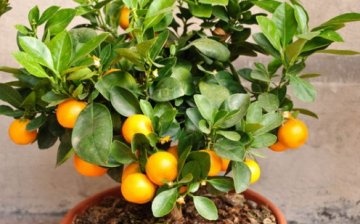
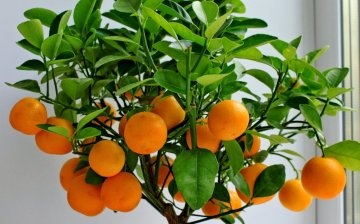

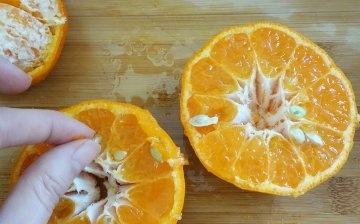

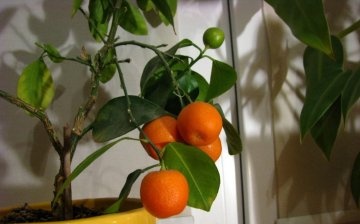
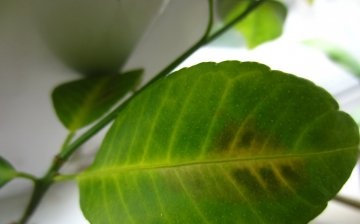







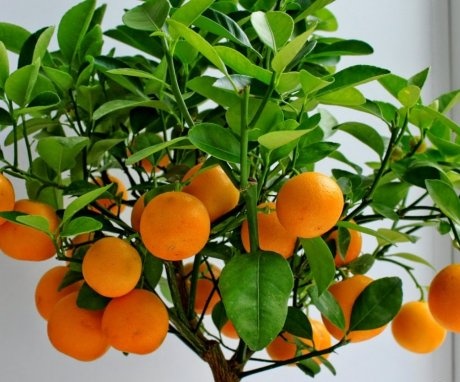
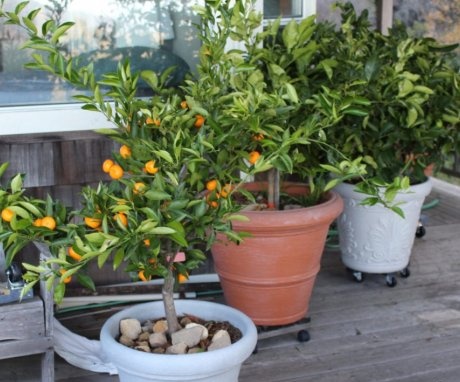
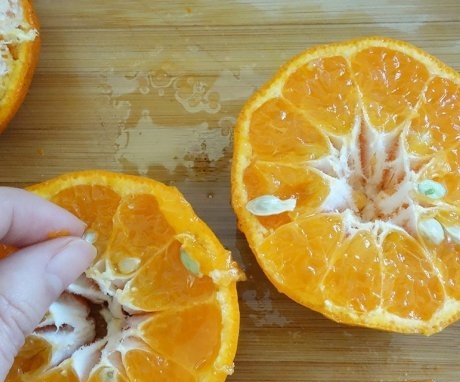
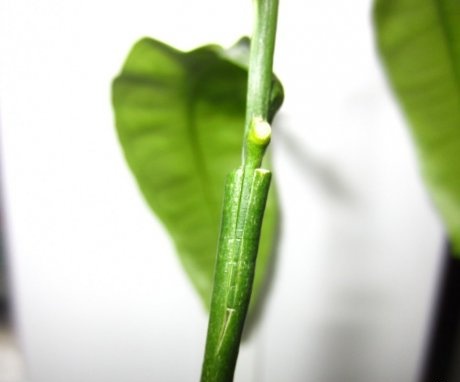
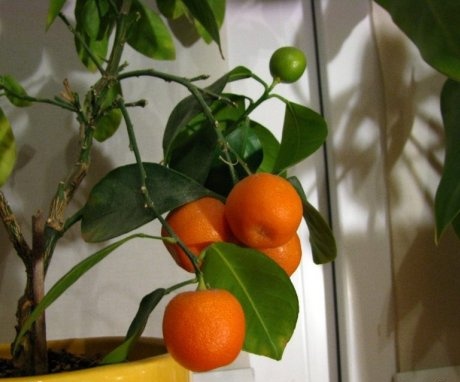

I always envy those who manage to grow citrus fruits, I myself never managed to do this, either I did not have enough knowledge, or the seeds were not of high quality and did not germinate.
I really like tangerine trees, I look at them directly when I see them in flower shops. I planted tangerine bones a couple of times - they did not germinate. Maybe it depends on the variety? We sell Spanish and Georgian tangerines, maybe someone managed to sprout a seed?
We had a tangerine in the room on the windowsill and even received several fruits from it in the next couple of years. Sour and not tasty.Then the tree grew large and handed over to a flower shop for sale.